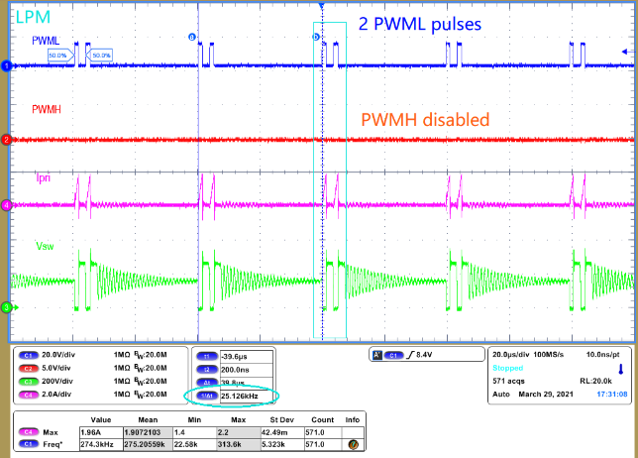SLUAAF9 September 2021 UCC28782
- Trademarks
- 1 Initial Board Visual Inspection and Start-up Check
- 2 Typical System Operating Waveforms
- 3Typical System Protection Waveforms
- 4Common Issues and Solutions
- 5References
2.3 LPM mode
Gradually increase load at SBP1 mode, the system will enter LPM mode, PWMH is disabled and there are two PWML pulses in each burst packet. But, the peak current is variable, as VCST will vary from VCST(MIN) to VCST(BUR). The burst frequency is fixed at 25 khz. See Figure 2-3.
 Figure 2-3 LPM Mode Operation
Waveform
Figure 2-3 LPM Mode Operation
Waveform